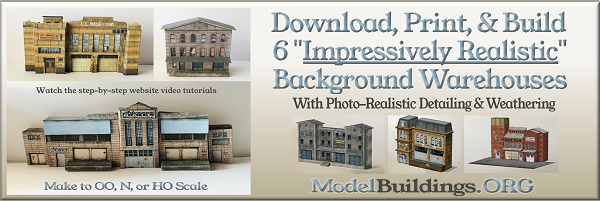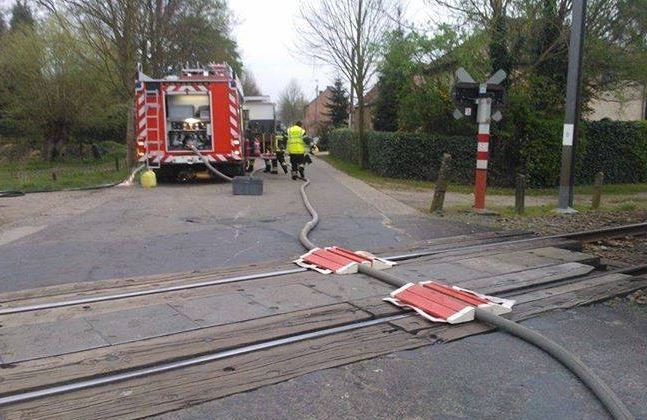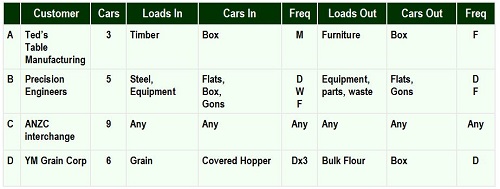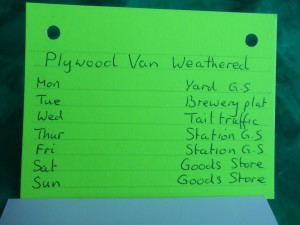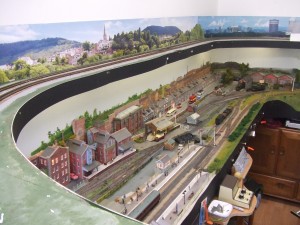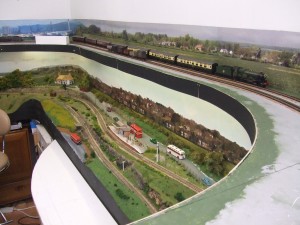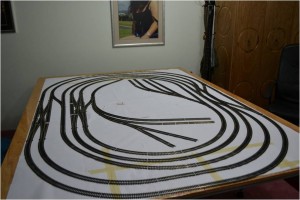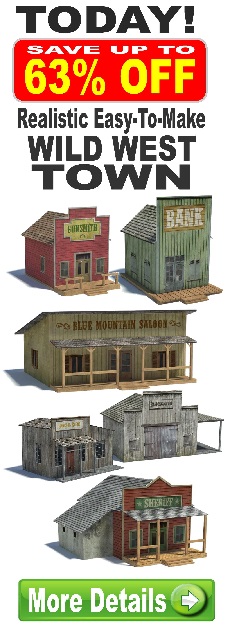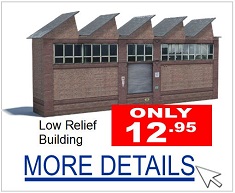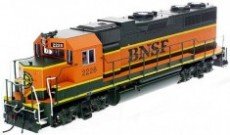Everything on model trains, model railroads, model railways, locomotives, model train layouts, scenery, wiring, DCC and more. Enjoy the world's best hobby... model railroading!
Another FREE Model Railroad Calculator – How To Measure and Build a Helix
Last week I gave you the link to use a free grade calculator. This week a helix calculator has been added… and it’s 100% free to use and share with your model railroading friends.
Here’s a direct link to use the Free Helix Calculator. Please tell your friends about it too.
Rust On Track
Chris would like help from experienced model railroaders:
“I am having problems with rust on the pickup (center) track on my Marklin layout. Is there any cure or help with this problem? Some track are still new, and is not in use. Any help, or suggestions will help. My trains are stranded.”
FREE Track Grade Calculator for Train Blog Readers to Use and Share With Friends in the Hobby
One of the biggest mistakes when planning a model railroad is to misjudge the required gradients (grades) for the layout. Even though the track plans might look good sketched on paper, the big question is; how practical will they be when converted from paper to track, wood, and foam on a model railroad?
The track may need to be longer than on the sketched plan if the locomotive is to pull several cars up and down an incline without mishap, or the wheels spinning through lack of traction. Having a locomotive cough, splutter, and eventually stall on a grade can be very disheartening, especially if it results in a derailment or burnt out motor.
Here is the link to the FREE TRACK GRADE CALCULATOR for you to easily work out the correct track grades, and avoid the problems mentioned above. You are welcome to share it on Facebook or by email with friends.
You can calculate in feet, inches, miles or in metrics.
8 Reasons to Single or Double Track Your Model Railroad
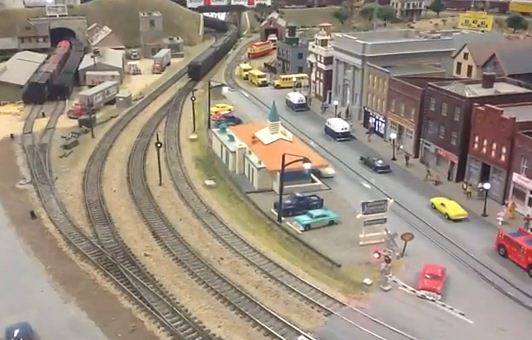 One of the key questions asked when it comes to track planning is whether to single track or double track the line. The answer to that dilemma will become apparent when you decide the answers to these 8 questions:
One of the key questions asked when it comes to track planning is whether to single track or double track the line. The answer to that dilemma will become apparent when you decide the answers to these 8 questions:
1. Do you have the ability to control two main lines at once?
Running two or more trains on your own is more difficult than you might think, especially when operating a large layout. If you’re operating with DC, you’ll require two power packs, or a double power pack. DCC has made wiring and control much easier, but if you are not paying attention, the trains could derail on a curve, in a tunnel, or onto the floor.
2. Are you prepared for more track maintenance?
I am not trying to discourage you from double tracking, far from it; but it is important to be aware of the ramifications in terms of cost, space, operation, and maintenance. Do you have the time, the energy, and the patience to ensure both mains are kept clean for your trains to run smoothly?
3. Can you afford to have two mainlines?
Double tracking could double (or at least substantially increase) your costs. Apart from the increased space requirements; you will need double the amount of track and roadbed, more ballast, more rail joiners… and the costs of those things can really add up.
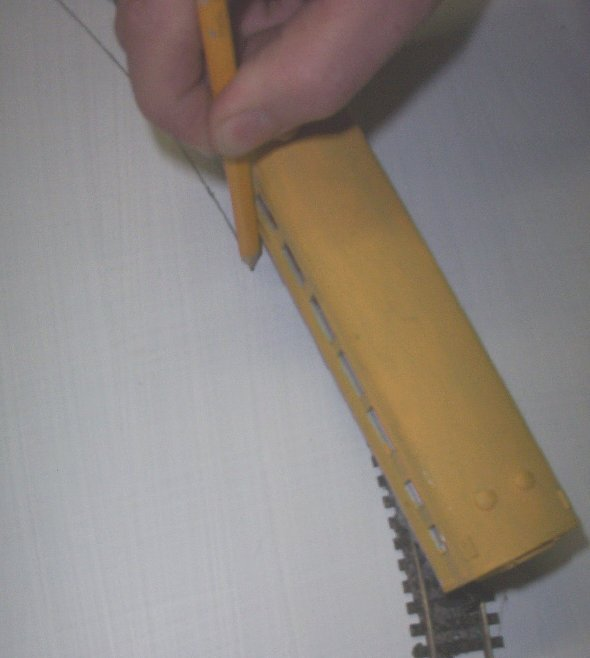 4. Do you have enough space to double track?
4. Do you have enough space to double track?
I touched on space requirements earlier, but the importance of having enough space to double track should not be overlooked. In particular, the curves need to be wide enough and spaced correctly, so that trains don’t side swipe each other and derail. As a guide, take a look at clearances from a prototypical viewpoint.
5. Do you operate enough freight traffic to justify two mains?
In the real world, single track railroads typically have a passing siding where a train can wait for another train to clear. If you’re only going to operate one train, and then maybe 10 to 15 minutes later operate the next one, then a single track is possibly all you require.
6. Is it worth having two mains if there’s minimal rail traffic?
Sometimes it is, especially from an aesthetics point of view. A model railroad can be more visually interesting, and look a little more prototypical by double tracking, or by using a combination of single track and double track. One option is to double track most of the layout and then run a single track over a bridge, through a tunnel, on a tight curve, possibly through a town, or somewhere else where it might be much easier to just have single track. That approach is not uncommon on real railroads, because it can save the railroad money without adversely affecting operational efficiency.
7. What is the length of your longest train?
If you opt to single track your layout and compensate by including passing sidings, then you’ll need to know the length of your longest train before committing. The length of the longest train will determine how long your passing siding needs to be. It should be at least the same length as your longest train.
On real railroads; sidings will generally have a slower speed limit than the main line. Trains on sidings might be restricted to 10 miles per hour. Also, it can be a good idea to position a siding close to a passenger station, rail yard or industry. An industry could operate off a siding without affecting the main line traffic operations.
Now, I could have posed this question earlier, because it is a key factor. However, I wanted to expand on the question so have left it until last.
8. Are you modeling a specific railroad with a specific time and place in mind?
This question is important because in days gone by, double track was often the norm. The same goes for specific railroads. As an example; railroads in Canada, United States and Mexico are classified based around their operating revenue.
In many instances a Class 1 railroad (the biggest) had as many as four mainline, with two in operation for passenger services, and two operating freight services. This minimized delays, because being on a different line the fast freights didn’t need to wait for the slower regular stopping passenger trains.
As a matter of interest, until January 1956 a railroad with revenues of $1 million was classified as a Class 1 railroad. Before 1956, railroads with annual revenues below $100,000 were classified as Class III railroads.
The annual revenue cutoff requirement for railroad classification has increased over the years. Class 1 railroads increased several times from $3 million to $5 million by 1965, to $10 million by 1976, to $50 million in 1978, and in 2011 to $433.2 million. The number of railroads meeting the Class 1 cutoff requirements reduced in number over the years.
Throughout the years there were also other requirements and changes that affected railroad classifications. In 1979 all terminal and switching railroads were re-designated to Class III.
Railroads with increasing revenues were often reluctant to be reclassified, because an upgrading usually meant a corresponding increase in legal and administrative costs. An example was in 1991 when the Wisconsin Central and Montana Rail Link Class II railroads requested the ICC (Interstate Commerce Commission) increase the required minimum revenue requirement from $93.5 million. This was to avoid being re-designated to Class I.
Also, the introduction of CTC (Centralized Traffic Control) changed railroad signal operations. Train crews and local signal operators were no longer responsible for routing decisions. Centralized offices for dispatcher’s were introduced to control train movements were trains moving in opposing directions on the same track use switches and sidings to pass each other.
The widespread use of automobiles, bus, air, and road freight also affected railroad operations. Many rail passenger services ceased to exist as railroads were forced to streamline or downsize operations with single track and passing sidings.
So, numerous changes have impacted rail operation over the decades. This is why, if you want to authentically replicate a real railroad, you will need to know how it operated at a particular point in time.
After giving some thought to how you answered each of the above 8 questions, the decision on whether to single or double track your layout will be an easy decision to make.
For more help with plans, diagrams, tutorials, videos etc on DCC, scenery, wiring, repairs, maintenance, overcoming problems etc watch this video…
4 Tips for Better Rail Yard Design
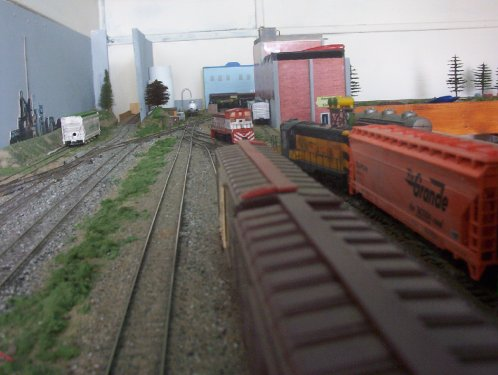 When it comes to rolling stock and locomotives, most of us own more than we could ever operate at one time. One solution is to store your excess trains in their boxes or put them on display in cabinets or on shelves. The other solution is to store all your extra engines and cars on yard tracks either as part your layout operation, or on separate “non-operational” tracks away from your layout.
When it comes to rolling stock and locomotives, most of us own more than we could ever operate at one time. One solution is to store your excess trains in their boxes or put them on display in cabinets or on shelves. The other solution is to store all your extra engines and cars on yard tracks either as part your layout operation, or on separate “non-operational” tracks away from your layout.
If you have plans to build a rail yard then here are some considerations:
1. Try to integrate your staging track with it linked to the main track at each end.
If there is sufficient space for two staging tracks, then better still. The intent of a yard (other than for storage) is to gather inbound cars for redistribution, and to assign them to trains bound for the intended destination.
Although the easy way is to just lift a car off the track and plonk it down where you want it, that takes the fun out of solving the puzzle. Real railroads can’t do that, so taking the easy option defeats the whole purpose of operating model trains.
To rearrange cars properly requires enough yard space to efficiently move cars without physically lifting them off the track.
2. Try not to squeeze too many tracks into a cramped space.
The problem is; when the tracks are positioned to close together it might cause a “domino effect” when a car derails.
3. Always include an escape route so that locomotives don’t get trapped on track spurs at the REAR of a line of freight cars.
4. Keep your yard configuration simple.
A complicated design could trigger problems even with the simplest mistake.
Overall; where possible a yard should be easy to get rail traffic in and out of. Keep the track configuration simple and the train movements will be simple too.
How to Add Interest to Your Model Train Operations
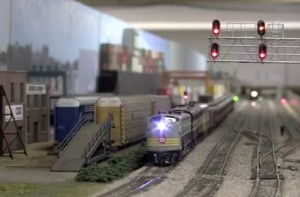 It is easy to get bored with a basic oval track layout with train movements being so limited. However, this doesn’t need to be the case if more track is added. With a more interesting track configuration it is possible to simulate the day-to-day activities of a real railroad. And, that’s where the stimulation, action, and challenges can really come into play.
It is easy to get bored with a basic oval track layout with train movements being so limited. However, this doesn’t need to be the case if more track is added. With a more interesting track configuration it is possible to simulate the day-to-day activities of a real railroad. And, that’s where the stimulation, action, and challenges can really come into play.
I said “challenges”, because the job on any railroad (real or scale model), is to operate the railroad as efficiently and effectively as possible. After all, without efficiency, a real railroad would not only lose customers, but potentially become unprofitable.
Every aspect of a railroad needs to operate efficiently including:
— Picking up freight
— Moving passengers
— Assembling trains
— Car delivery to consignees
— Sorting freight cars on arrival based on planned destinations
— Returning empty cars
So for realistic railroad operations, trains are scheduled with the purpose to make profit for the railroad. Without profit the railroad wouldn’t exist. So, cars on spurs need to be efficiently organized and accessible (too many cars on a spur can cause operational issues and delays).
The pickups and drop offs can be controlled on a model railroad with the aid of car cards. The trains would go from one destination to another picking up and dropping off passengers or freight. This all needs to happen to a schedule so as not to delay passengers, or delaying freight from getting delivered, or delaying other trains.
Too many cars waiting around doing nothing could send the railroad broke. However, not everything on a railroad moves all the time. Even though trains are generally on their way to somewhere, cars typically:
— Wait near an industry for loading/unloading
— Wait to be picked up at an interchange
— Wait for the next train in a classification yard
— Wait on empty car tracks
As with any business, a railroad needs to be customer focused:
— The railroad must understand and meet the needs of customers
— The track capacity needs to be clearly understood
— The inputs and outputs by commodity and car type need to be known
— The railroad should know the frequency (and quality) of customer needs to calculate the required frequency, number, and train type
— To maximize efficiency, the locations and industries will need names.
The loads and traffic needs of a small switching layout might look something like this –
For more information and ideas on train operations; login to the Online Model Train Club and there’s a special Category called “Operation”, with plenty of ideas for interchanging cars, switching a siding, run-around operation, factors determining the operational capacity of a railroad, and various other operation related topics.
You won’t necessarily require a large layout for realistic railroad operations:
— With a switching layout, the cars move on to (or off) the layout
— All traffic will be yard to staging or staging to yard
— Traffic needs to be logically arranged in context
— An Interchange track will add operational variety and complexity
Ways to Represent Car Movements
Here are some options:
— Waybills and car cards (single and multiple destination)
— Color-Coded Tacks
— Switch Lists (Computerized)
— “Car-for-Car” Replacement
— Prototype paper work
It is over to you what system you opt for. Stick with one system or use a mix to add interest and variety to your operations.
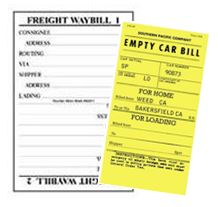 Waybills typically use one card for each car on the layout to determine the destination and movement of each car.
Waybills typically use one card for each car on the layout to determine the destination and movement of each car.
You can set the perimeters such as whether the engineer or brakeman has the responsibility for updating the train’s documentation. Decide whether you’ll use card cards, waybills, or a combination system. Decide if there are any special instructions to go with the car.
This is where model railroad operation can really become interesting, because each train or car can function like pieces (or tokens) on a giant playing board (your layout). Waybills can be shuffled (like cards) to control the game (destinations, loads etc).
All going well; each car will arrive at the correct destination on, or about, the scheduled time. If not, the whole railroad could suffer delays. Too many delays and this will affect the railroads profitability.
The key to all this is to have fun, regardless of whether you want to take operations seriously, or just watch your trains go around the track. A little complexity can give a model railroad purpose, but too much complexity can lead to frustration. If nothing else; hopefully this article has stressed the importance for a railroad to have a purpose, and the reasons and logic why trains and individual cars are moving around the track, or perhaps why they are sitting on a siding.
LATEST POLL RESULTS
407 people voted in our recent poll which asked:
“Will you be operating your trains to entertain friends and family over Christmas/New Year?”
YES – if I get the opportunity (31%, 126 Votes)
Yes – but only if they show interest (19%, 76 Votes)
No – my trains will be having a rest (18%, 74 Votes)
No – I don’t think they’ll be interested (8%, 34 Votes)
I don’t have a layout yet (24%, 97 Votes)
How To Make Model Railroading More Interesting
Alan from the UK sent in this idea to share:
One of the readers said he was bored just running trains and wanted some suggestions how to improve matters.
Here’s my idea…
Give each wagon a card with it’s description at the top. Then write the days of the week in a column on the left, and opposite each day write where the wagon is supposed to go (see photo) I have the following destinations on my layout:- Brewery, Creamery, yard, goods shed, station goods shed, goods store, tail traffic (at the rear of passenger train), storage siding, canal wharf, coal merchants, and loco coal stage.
My layout is terminus to fiddle yard which is a 7 road turntable type. Its length restricts the No. of 10ft wheelbase wagons to 8 or less. I converted a dice so that it is numbered 2 to 8. After shuffling all the cards, I throw the dice. Say I get a 6, then I take the top 6 cards and make the train up in the order that the cards were dealt. The train leaves the FY and when it reaches the station / goods yard, the wagons are shunted into their allotted places.
You can also do the same the other way of course, shuffle the cards and shunt the wagons in order to make up a train.
When you look below you’ll see Alan also has a high level shelf track as part of his layout. Alan says “this is for running in locos plus I can run longer trains at speed.”
A Look Inside The Online Model Train Club
Many readers of this blog are also loyal members of the Online Model Train Club, so will be familiar with what club membership can offer. This video gives a look at some the resources they accessing…
Click here to watch the 3 videos mentioned above.
Why Construct a Shelf Layout?
Space limitations are a problem almost every model railroader faces when constructing or expanding their layout. For some the solution is to stick with smaller trains such as n scale or z scale. They obviously require less space to operate, and the landscape also takes up less space when compared to bigger scales such as HO, OO, and of course the very large O scale.
However, another option worthy of consideration is to include a shelf layout as part of the design. This could be as a standalone track or be incorporated as part of an existing oval, loop, or continuous-run layout.
In most situations a shelf layout will typically take up less space; however being narrower in design, they can present some limitations. Unless the shelf runs a full 360 degrees around the room, continuous running might not be possible without more hands-on operation.
This could be viewed as an advantage or disadvantage, depending on whether you like to just sit back and watch your trains go around, or whether you prefer to take control of your trains by switching them onto different tracks. If the length of the shelf is reasonably short, then the train movements can be over in a matter of moments if the train simply has to get from one end of the shelf to the other.
Adding yard operations to a shelf layout can certainly increase the operational possibilities and make the train movements more complex than the operation of a basic ‘loop’ layout.
Baseboard Modules Bolted Together
Railroad Baseboard Fits Together In Modules
Steve contributed this article:
Thank you for all of this continual brilliant information. I purchased my trains at the age of 19 and am now fifty. I built a very accurate and good quality loft room in my father’s house in England ready for a railway like Talented Dave’s set up but left and went to live in Australia. Many years later my father visited and brought over my trains. I finished renovating my unit if that is possible. I have built a new desk 2200mm x 1600mm x 750mm high. To hide my train set so my friends when they visit will not know its there and won’t know I am an Anorack as they call it in England.
Using Cedar Marine Plywood for the Train Baseboard
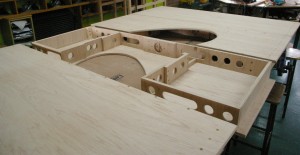 I purchased 15mm thick Cedar marine plywood as it is my favorite plywood. Too good for the job but it doesn’t splinter easily. I was going to build my board at Christmas but we had a Creative Arts & Technology night coming up at the school where I am the Design and Technology teacher. Three of my students had finished their robotic project so I quickly designed the board and started them off building it. So I didn’t embezzle the company I donated six deep fat fryers for their time. My board is going to have two layers and at least six trains running at a time.
I purchased 15mm thick Cedar marine plywood as it is my favorite plywood. Too good for the job but it doesn’t splinter easily. I was going to build my board at Christmas but we had a Creative Arts & Technology night coming up at the school where I am the Design and Technology teacher. Three of my students had finished their robotic project so I quickly designed the board and started them off building it. So I didn’t embezzle the company I donated six deep fat fryers for their time. My board is going to have two layers and at least six trains running at a time.
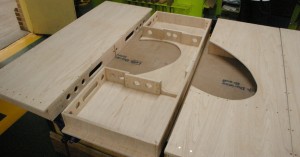 The bottom board is constructed from four pieces that bolt together with four bolts for each section. Each section has lifting holes, bus holes and hole for point motor wires and LEDS. I am going to wire for DCC. In places I have had to join the plywood because I didn’t want to waste any expensive pieces not by choice. Apart from a few glue marks the board is excellent.
The bottom board is constructed from four pieces that bolt together with four bolts for each section. Each section has lifting holes, bus holes and hole for point motor wires and LEDS. I am going to wire for DCC. In places I have had to join the plywood because I didn’t want to waste any expensive pieces not by choice. Apart from a few glue marks the board is excellent.
The students also made me some adjustable legs out of steel which were welded and cleaned up and powder coated. I’ll improve on the up and down motion later.
Collection of Model Trains Ready For The New Layout
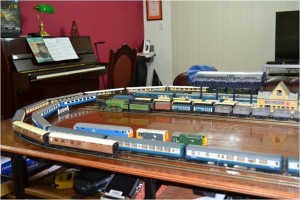 These are a few more pictures of my track set out template (Not totally convinced yet). Adjustable legs made from 40mm and 35mm Galvanised box section. A picture of some of my trains. I Like a lot of Australian trains and rolling stock detail is very good.
These are a few more pictures of my track set out template (Not totally convinced yet). Adjustable legs made from 40mm and 35mm Galvanised box section. A picture of some of my trains. I Like a lot of Australian trains and rolling stock detail is very good.
I have just started a sloping girder bridge to take you from the top layer a round the curve. I have two Faller Systems including the level crossing which I would like to factor in. I actually like goods yards and an industrial look. I won’t be using the Hornby station or buildings shown in the photograph. I really do like Australian landscape and gum trees and grain storage systems but I only have about 380mm to fit under the hide away desk.
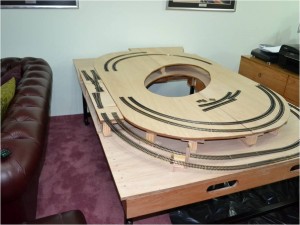 Thanks to Steve for sending in the information and photos. He has an exciting project ahead of him, and if the baseboard modules are anything to go by, the standard of his completed layout will be extremely high.
Thanks to Steve for sending in the information and photos. He has an exciting project ahead of him, and if the baseboard modules are anything to go by, the standard of his completed layout will be extremely high.
If other readers or Club members would like to send in details about the progress on their layout, simply use the “Submit Your Question” link in the right column to make initial contact with the Blog Moderator. Please carefully edit any information before submitting it for possible publication.
Waybill Systems For Interesting Train Operation
Club member Franky asks:
“I’m bored with just running my trains around and around my layout. Part of it is my own fault, because the track config is just a main line with a couple of sidings. I have space to include a branch line, so I know when I add that, it will provide more variety. What I need is more purpose for my system. I know a little about the basics of how waybills work, but I need more input. What do others use to operate and justify their railroad layouts?”
Making an Authentic Scale Model Mine Chute With a Site Office, and Miners Accommodation Buildings
Why Build a Scale Model Mining Town?
Mining settlements with operating mines exist throughout the world and most rely on a railroad to move the coal or mineral deposits for processing or export. However, over time, many mines either run out of the resource they are extracting from the ground, or the minable quantities become unprofitable. So the mines close and the people move away leaving a ghost town behind. Whatever scenario, there are possibilities for the model railroader to build a scene depicting activities at the time.
In the United States pioneering communities were often established as a result of a “gold strike.” Other communities grew around coal mining towns, cow and farming towns, gold prospecting terrain, and some towns just became railroad towns due to their proximity to other towns or resources.
Settlements often began with just a few farmers or miners living in tents, or self built cabins, or shacks. As the settlement grew, other buildings and services developed. Depending on the size or scale of mineral find or farming activities, a small town would get established complete with streets (or art least a main street), a general store, saloon, maybe a jail or sheriffs office, a schoolhouse, church, and blacksmiths. The arrival of the railroads really opened up some of these small towns and many eventually grew into some of the large cities we know today.
Go here for more information on how to build a model railroad mining town scene compete with mining chute, miners shacks, mine site office, small school house, mine managers house, and workers accommodation.
Go here for building an old Wild West town complete with sheriffs office, saloon, blacksmiths workshop, general store, gunsmiths, and Bank.
Some Mining Towns Became Ghost Towns
Other towns however, never really grew. The valuable mineral deposits ran out when there were no more precious minerals to dig, no ore smelter or mine chute was built, no railroad arrived, and the few structures left were often abandoned. Even a scene like that (although somewhat sad), can develop into a mysterious and fascination landscape on a model railroad. The hobbyist can add broken down wagons, and maybe even some tumbleweed to complete the realism of the diorama.
Most Mining Communities Need a Railroad
For those who are interested; some of the historic mining communities throughout North America include: Glace Bay (Nova Scotia) and Dawson City (Yukon) in Canada; Skagway and Juneau in Alaska; Tombstone, Bisbee and Klondyke in Arizona; Calico and Columbia in California; Denver and Idaho Springs in Colorado; Custer in Idaho; Seymour, Coalville, and Muchakinock in Iowa, Bessemer in Michigan; Marble, Chisholm, Mountain Iron in Minnesota; Butte and Virginia City in Montana; Goldfield in Nevada, Pinos Altos and Silver City in New Mexico; Deadwood in South Dakota; Eureka, Silver Reef and Spring Canyon in Utah; and Hurley in Wisconsin. This list is by no means complete, but serves to show how wide spread and important mining is or was in the USA and Canada.
This article has mainly focused on mining in North America, but that’s not to say mining in other countries has been or still is very important. South Africa is known for its precious metals like diamonds, Australia has many resources including iron ore, coal, gold, copper, silver, uranium, opals, bauxite, nickel, diamonds, zinc, oil shale, petroleum, and natural gas. Other countries throughout the world also operate big mining operations of one kind or another.
So it doesn’t matter where you live, or what era or area you as basing your model railroad around; it is usually possible to incorporate mining activities of some kind. And, most mines need good rail access to transport the precious resources to a refinery, or to a port for export. The ideal situation for any model railroader!
Model Building Bulk Packs Prove Big Hit!
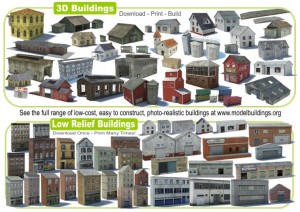 The bulk packs of downloadable buildings are proving popular with model railroaders and those interested in making dioramas. Many of the buildings can be purchased separately, but most are also available in bulk packs of 6 or more assorted buildings. Here are some of the most popular bulk packs:
The bulk packs of downloadable buildings are proving popular with model railroaders and those interested in making dioramas. Many of the buildings can be purchased separately, but most are also available in bulk packs of 6 or more assorted buildings. Here are some of the most popular bulk packs:
Big Bundle Pack #1 (SAVE 67% of individual prices)
Big Bundle Pack #2 (SAVE 66% of individual prices)
Background Buildings Bulk Packs (Some up to HALF PRICE off individual buildings)
Multi Pack Buys (Saving between 35% to 68% off individual prices)
The buildings are fun and easy to build using card, corflute, or foam. The downloadable plans are already weathered & detailed so no paints are required (unless you want to add further detailing). Apart from being very realistic in appearance, they are also very sturdy after construction, although you can add extra internal supports if you choose. You only need to download the plans once, and you can then build several from the same download if you choose. The plans can be made to OO scale, HO, or N scale.
